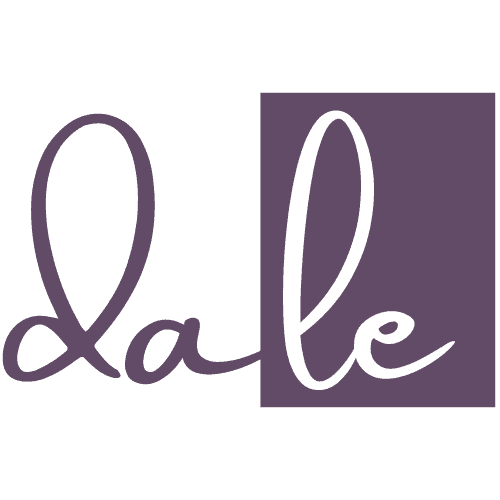I was once asked to design a marketing strategy for an element of the business I was consulting with. It has nothing to do with book marketing, but it’s worth a moment of your time.
I’d repeatedly asked for the overall business marketing strategy, and you’ve guessed it didn’t exist. So, against my better judgment, I did as I was instructed. At the beginning of my presentation, I was told it was surprisingly good. Oh, good, oh! However, I prefaced my presentation by saying it wasn’t much use without the overall strategy. In it, I’d written, “This depends on, and until I know this, I can’t.”
In truth and in frustration, I’d designed a strategic plan and added tactics just to fill it out. I’d gone against my mantra of strategy before tactics. Needless to say, I never did see an overall business marketing strategy before leaving.
For authors, I want to ask, “Before you tell me what marketing tactics you plan to use, can you explain the strategy behind them?”
We can all rattle off a dozen tactics we’ve read about – Instagram Reels, podcast tours, Facebook ads, influencer partnerships. But the real question is why these specific tactics and how do they serve your specific goals?
As a creative, I can tell you my mind goes a million miles an hour, and I can think of many tactics because I love creating. But I also like looking at things strategically and asking myself some tough questions.
I have a book coming out in November, and long before I wrote it, I was thinking about strategy. My reasons were mostly because I did not want to write a book – until I did.
My question was, “What is the point of writing it if you don’t want to turn it into a business?” I have spent many years learning all kinds of things while having a marketing career and working on business stuff, and these, allied with my story, were calling my heart.
I knew I couldn’t just build it and they would come.
A lot of book marketing fails before it even begins. Authors build tactics on rotten wood rather than strategic foundations. They ask, “What should I do?” before they answer, “What am I trying to achieve, and for whom?”
It’s like someone asking whether they should use a hammer or a screwdriver without first establishing what they’re trying to build. The tool choice is meaningless without the blueprint.
The Cart Before the Horse Problem
Walk into any author Facebook group and you’ll see the same questions repeated endlessly: “Should I be on TikTok?” “How do I get more Instagram followers?” “What’s the best way to run Facebook ads?” “Which podcast booking service should I use?”
These are tactical questions masquerading as strategic ones. They assume that marketing success comes from choosing the right tactics and executing them properly. However, tactics without strategy are expensive activities that feel productive while achieving little.
Again, as a creative person who loves to create, I struggle with not playing with the socials before understanding why.
We can seriously exhaust ourselves by trying to implement every tactic we’ve read about, hopping from one approach to another when we don’t see immediate results. We’re constantly busy, spending money, and feeling behind because there’s always another tactic we haven’t tried yet. And then there’s FOMO.
The problem isn’t effort or commitment. The problem is optimising for tactics when they should be optimising for outcomes.
Of course, there is an argument for experimenting, because that feedback is invaluable.
What Strategy Actually Means
Strategy isn’t a fancy-pants word for planning. It’s the coherent framework that connects your vision and goals to your actions, ensuring that everything you do serves a specific purpose in service of a specific outcome. And I love a good framework to get my head around.
Think of it like this – strategy is what and why, and plan is when, how and who, along with the resources and timelines. Your tactics fall out of this.
Here’s a great explanation of the difference.
Strategic thinking asks fundamentally different questions than tactical thinking:
Tactical thinking asks: What should I post on social media today? Strategic thinking asks: What transformation am I trying to create for my readers, and how does my content consistently support that transformation?
Tactical thinking asks: Which podcast should I pitch for interviews? Strategic thinking asks: Where do my ideal readers spend their time when they’re looking for solutions to their problems, and how can I add value in those spaces?
Tactical thinking asks: How much should I spend on Facebook ads? Strategic thinking asks: What’s my reader’s journey from problem awareness to book purchase, and where does paid advertising fit into that journey – if at all?
Strategy provides the “why” behind every “what.” It’s the North Star that helps you choose between infinite tactical options based on what will actually move you towards your goals.
Basically, why the frick am I doing this?
The Strategic Foundation Framework
Before you choose a single tactic, think about these five strategic foundations. These aren’t nice-to-know philosophical questions; they are things that will directly inform every marketing decision you make.
Foundation 1: Transformation Definition
What specific change will your book create in your reader’s life? Not “it will help them” or “they’ll learn something useful,” but what concrete transformation occurs between opening your book and closing it?
When I work with clients on books, I discuss the reader’s journey towards an outcome. While we cannot predict what a reader will actually get, we need to be clear. Also, I like every chapter to have an outcome.
Are you helping someone overcome imposter syndrome, navigate a career transition, build better boundaries, or develop a creative practice? The more specific you can be, the clearer your strategy will be.
Foundation 2: Reader Identification
Who specifically needs this transformation? Not “anyone who wants to improve their life,” but who is the primary person your book serves?
This requires moving beyond demographics to psychographics. Yes, they might be women in their 40s, but what’s actually relevant is that they’re people-pleasers experiencing an identity crisis after years of putting everyone else first. The demographic information helps you find them; the psychographic information enables you to serve them.
Foundation 3: Problem Precision
What specific problem keeps your ideal reader awake at 3 am? What do they complain about to their closest friends? What have they tried to fix that hasn’t worked?
The more precisely you can articulate their problem, the more powerfully your book positions itself as the solution. Generic problems lead to generic marketing that resonates with no one strongly enough to motivate action.
Foundation 4: Unique Positioning
How is your approach different from everything else available? This isn’t about being completely original – that’s impossible – but about your distinctive perspective or methodology. AKA your take on things.
Maybe you’re the person who connects autoimmune conditions to emotional patterns, or you approach productivity through the lens of neurodivergence. Perhaps you teach boundaries through creative expression rather than confrontation. Your unique angle becomes your strategic advantage.
Foundation 5: Outcome Visualisation
What does success look like twelve months after your book launches? Not just book sales but also the broader impact you want to create in your life and career.
I said earlier that my book launches this year. I know I cannot magic a business out of a box with it – but in 12 months, success looks like a thriving and profitable write from the wild community and an interested following (not that I will be counting likes…)
Maybe success looks like speaking at three conferences per year and launching a signature programme that flies off the shelves. Other things might be a community of engaged readers and developing a sustainable coaching practice. One thing that many people desire is to establish themselves as the go-to experts in their field and attract higher-level opportunities.
Having said that, when you visualise success, feel it too. It will really bring it alive.
From Strategy to Tactical Choices
Once you have clarity on these five foundations, tactical decisions become remarkably straightforward(ish), and they will fall out of your plan. You no longer choose tactics based on what seems popular or what other authors are doing. You choose them based on what serves your strategic foundations most effectively.
Let’s say your book helps women over 50 who have spent a lifetime giving themselves away to create boundaries without guilt. Your strategic foundations might look like this:
Transformation: From saying yes to everyone else’s priorities to protecting your time and energy without feeling selfish.
Reader: Women over 50 who appear to have it all together but feel constantly overwhelmed and resentful about their lack of personal time.
Problem: They’ve been taught that women sacrifice everything for their families (and other things), but they’re burning out and losing themselves in the process.
Unique Positioning: You teach boundary-setting as an act of self-compassion rather than selfish behaviour.
Outcome Vision: Building a community of women who support each other in prioritising their wellbeing, leading to speaking opportunities at conferences and developing boundary-setting workshops.
With these strategic foundations in place, your tactical choices become easier:
You won’t waste time on TikTok because overwhelmed working women aren’t scrolling dance videos when they need boundary help. Instead, you will focus on silver blogs and over 50 women’s Facebook groups because that’s where your readers go for support.
You won’t create generic productivity content because that’s not your unique positioning. You will create content specifically about boundary-setting as self-compassion and kindness because that’s your distinctive approach.
You won’t measure success by vanity metrics like follower count (I know we will continue to do this). You will track email subscribers from your target demographic and speaking opportunities at properly focused events because that serves your outcome vision.
The Strategic Filter
Once you understand strategic thinking, every opportunity becomes easier to evaluate. Instead of feeling overwhelmed by infinite options, you can run every possibility through your strategic filter:
- Does this serve my transformation definition?
- Does this reach my identified readers? Does this address their specific problem?
- Does this showcase my unique positioning?
- Does this move me towards my outcome vision?
If the answer to most of these questions is yes, it’s probably worth pursuing. If the answer to most is no, it’s a distraction regardless of how appealing it seems.
This filter saves you from shiny object syndrome, from saying yes to opportunities that don’t serve your goals, and from the exhausting cycle of trying everything and mastering nothing.
I’ll also say to spend time reflecting, rather than rushing ahead.
The Confidence of Strategic Clarity
Perhaps the most important benefit of strategic thinking is the confidence it provides. You can ignore the noise when you know exactly what you’re building towards and why.
This confidence is valuable in the vulnerable world of book marketing. When you’re putting your ideas and expertise into the world, it’s natural to second-guess yourself, wonder if you should be doing what everyone else is doing, and worry that you’re missing some vital tactic.
Strategic clarity grounds you in your own purpose. It reminds you that you’re not trying to succeed like everyone else – you’re trying to succeed according to your definition of success.
Strategy as Creative Constraint
Counter-intuitively, strategic constraints often increase creativity rather than limiting it. When you know exactly who you’re serving and what transformation you’re creating, you can develop more innovative approaches to reaching and serving that specific audience. And it feels much more exciting. I was up early this morning working on a campaign because I’d sat back and really thought about my strategy.
That’s not to say I haven’t gone around in circles and sworn – but I have kept returning to my questions.
The Implementation Reality
Strategic thinking doesn’t make implementation easier – it makes it more focused. You still need to show up consistently, create valuable content, and build relationships with your readers. But you’re doing all this with a clear strategic vision rather than hoping that activity will eventually lead to results.
This focus makes the work more sustainable. Knowing why you’re doing each activity and how it serves your bigger picture makes you more likely to maintain consistency even when motivation fluctuates, and it will.
Your Strategic Starting Point
If you’re feeling overwhelmed by all the marketing advice out there, step back from tactics entirely. Don’t research social media strategies, advertising options or promotional calendars. Instead, spend time getting crystal clear on your strategic foundations.
Write out your answers to those five strategic questions. Test them and refine them.
Your book deserves more than scattered tactics and hopeful activity. It deserves strategic thinking that connects every action to a specific outcome.
Ready to develop your strategic foundations and build a marketing approach that serves your goals? Join my Author & Book Marketing Club, where we focus on strategic thinking that transforms how you approach every aspect of your book marketing.














